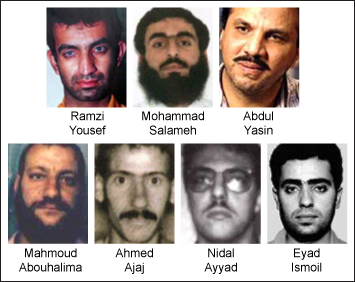Today, February 26, 2013, marks the 20th anniversary of the first terrorist attack on the World Trade Center. The deaths of six and injuries sustained by more than 1,000 people were facilitated by a number of illegal aliens, one of whom fraudulently acquired U.S. citizenship through the 1986 amnesty included in the Immigration Reform and Control Act (IRCA). Each of the alien terrorists exploited the U.S. immigration system as detailed in the Center for Immigration Studies report "The Open Door: How Militant Islamic Terrorists Entered and Remained in the United States, 1993-2001".
The fact that hundreds of thousands of illegal aliens were able to fraudulently obtain amnesty through IRCA – leading one expert to call the amnesty "one of the most extensive immigration frauds ever perpetrated against the United States Government" – it is clear that the United States did not have the capacity to safely administer an amnesty. Current amnesty proposals will likely suffer from similar deficiencies and many problematic individuals will likely be granted legal status. Each of the case studies listed below should be considered not only in the context of amnesty, but also in the context of Deferred Action and lax detention standards since the apparently clean records of some of these terrorists, prior to the attacks, would have made them natural beneficiaries of the Obama administration's permissive immigration policies.

Mahmud Abouhalima: Mahmud Abouhalima overstayed a tourist visa, becoming an illegal alien, and later received amnesty under the 1986 Immigration and Reform and Control Act (IRCA), by falsely claiming to be an agricultural worker even though he worked as a cab driver. Given the limited resources of the INS, it was not possible to investigate or even verify the stories of the millions of people who applied for amnesty. As a result, the vast majority who applied for the amnesty were approved. Issuing Mahmud Abouhalima a green card facilitated his terrorism because he could then work at any job he wished and was able to travel to and from the United States freely. In fact, according the October 4, 1993, issue of Time magazine, it was only after he received his green card in 1990 that he made several trips to Pakistan, where he received combat training. The legal status he acquired as a result of the 1986 amnesty is what made his training by al Qaeda possible.
Mohammad Salameh: The case of Mohammed Salameh, who rented the truck used in the 1993 World Trade Center bombing, shows why an amnesty will not hinder terrorists. His application for amnesty was denied because he was not as adept at making fraudulent claims as was Abouhalima. His amnesty application was rejected. But because the government did not deport failed amnesty applicants, he continued to live and work in the United States illegally and ultimately take part in terrorism. Thus, terrorists who apply for amnesty either receive it, making their operations easier, or, when turned down, simply continue to engage in terrorism unhindered. IRCA only helped terrorists and did nothing to hinder those involved in the first Trade Center bombing.
Ramzi Yousef: Mastermind of the 1993 World Trade Center attack. Although he did not have a valid visa to enter the country, when he arrived at JFK airport in September of 1992 he applied for asylum and was paroled into the United States while his claim was adjudicated. Had he been held in detention, it would have made it far more difficult for him to mastermind the attack.
Ahmad Ajaj: Ahmad Ajaj tried to enter the United States using a false Swedish passport and was detained at JFK Airport in 1992. Since Sweden is part of the visa waiver program, a Swedish passport would have allowed him to enter the United States without applying to the State Department for a visa. While careful inspection at the port of entry is critical to homeland security, Ajaj was still able to take part in planning the 1993 World Trade Center attack from his prison cell (he was jailed for passport fraud). He was released from jail a few days after the WTC bombing. While the INS was not aware when he was released that he was part of the bombing conspiracy, the agency was aware that he committed fraud, that he had no legal right to be in the United States, and that he had bomb-making manuals in his possession when first detained.
Eyad Ismoil: Originally entering the United States on a student visa, Eyad Ismoil dropped out after three semesters of schooling and remained in the United States illegally. He also worked at a store in Dallas despite his illegal status. He helped load the explosive chemicals into the van and drove it to the WTC.
Two other conspirators included Nidal Ayyad and Abdul Rahman Yasin, both U.S. citizens — one by naturalization and one by birth. Ayyad is a chemical engineer who provided the explosive expertise for the 1993 World Trade Center bombing. He was born in Kuwait and later immigrated to the United States and was eventually granted U.S. citizenship. Yasin was born in U.S. in 1960 while his father was here as a foreign student, but his family moved back to Iraq shortly after his birth. After getting a U.S. passport, he came to the United States a few months before the 1993 WTC attack. Though he has been indicted, he has never been caught.
